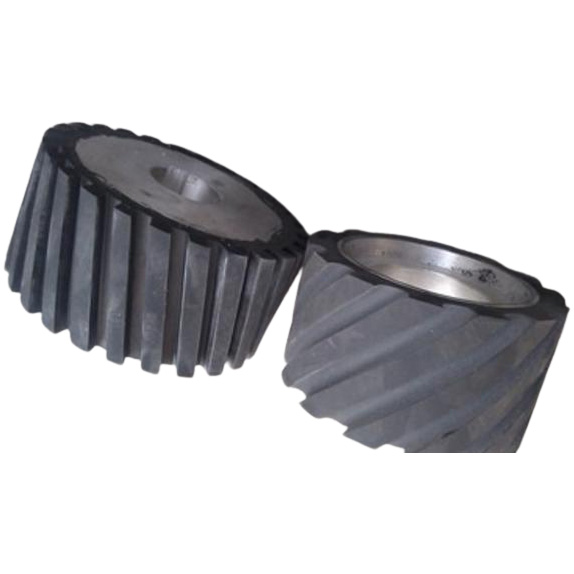As an important power transmission component, rubber coated drive wheels play a key role in multiple industrial fields with their unique physical properties. This design significantly improves the friction coefficient and buffering performance of the drive wheel by covering the surface of the metal hub with highly elastic rubber material, so that it can adapt to the power transmission requirements under complex working conditions.
In automated assembly line equipment, rubber coated drive wheels are often used in the transmission mechanism of material conveying systems. Their flexible contact surface can not only effectively transmit power, but also reduce the surface wear of conveyor belts or workpieces. Especially in scenes with high cleanliness requirements such as food processing and electronic assembly, their pollution-free and low-noise characteristics are particularly prominent.
In the field of engineering machinery, the application of rubber coated drive wheels is reflected in the reliable operation of equipment in harsh environments. For example, after the crawler drive wheel of mining machinery is treated with rubber coating, it not only enhances the meshing tightness with the crawler plate, but also effectively alleviates the metal fatigue problem caused by the impact of gravel, greatly extending the service life of the equipment. In addition, in the walking device of agricultural machinery, such drive wheels can ensure sufficient traction and reduce soil compaction by optimizing the ground pressure distribution, thus achieving a dual improvement in farming efficiency and environmental protection.
Special transport vehicles also benefit from the innovative application of rubber-coated drive wheels. The drive wheels of port rail container transporters adopt customized rubber formulas to overcome the problem of metal wheels slipping easily when they come into contact with rails. At the same time, they absorb high-frequency vibrations through elastic deformation to ensure the stability of precision instruments during transportation. In extreme temperature environments, specially treated weather-resistant rubber-coated drive wheels can still maintain stable friction characteristics, which enables polar scientific research vehicles or transfer equipment in high-temperature smelters to achieve reliable operation around the clock.
With the advancement of materials science, rubber coated drive wheels are expanding their application boundaries in more industrial scenarios through structural optimization and composite material research and development.


